What to Do With Your Delicious Summer Melons
From salsa to salad to soup, here are some great refreshing dishes to make with these sublime, succulent fruits
The Crenshaw melon (left) and the Canary melon are just two of the many melon varieties that will appear in markets this summer. Photo by Alastair Bland.
Under the blazing summer sun, they bulge out of fields of parched dirt, dead grass and lifeless dust, almost like a parable for the spontaneous appearance of Earth’s first life: melons. It’s the season, and the hotter and more miserable the weather gets for the rest of us, the better it often is for these juicy sun-lovers. Some farmers don’t even water their melon vines at all—they call it dry-farming, which supposedly intensifies many fruits’ flavors—and still, football-size creatures with names like Rayann, Sharlyn, Charentais and Santa Claus swell toward ripeness.
Scores of melon varieties — beyond just the honeydew and cantaloupe — are available in the United States, especially from smaller farmers. Some of these are favorite heirlooms born centuries ago and maintained by seed saving; others are more modern creations of scientific breeding programs. Nearly all these melons are great when ripe—but some are better than others.
Here are six of the best melons worth watching for this summer, plus great dishes to make with them:
Hami-Melon-Tomato Salsa
The Hami is a Chinese variety of muskmelon, elongate, with a distinctive spider web pattern radiating over its yellow-gold hide and bearing very sweet peach-colored flesh. We used a jicama-melon salsa recipe from Yum Scrub Organics, replaced the jicama with fresh tomatoes, added red onion and served with homemade tortillas. The salsa resembled a standard pico de gallo with boosted sweetness thanks to the Hami melon. If you have a taste for the spicy, add paprika.
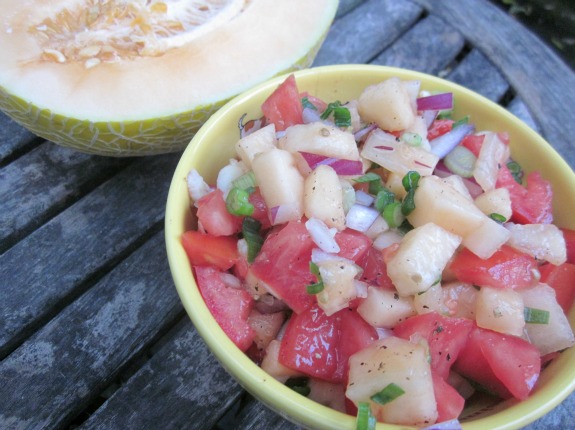
This salsa includes most of the basic ingredients of pico de gallo salsa, as well as the sweet, crisp flesh of the Hami melon. Photo by Alastair Bland.
Sharyln Melon Gazpacho
This melon is the shape of a football with the skin texture of a cantaloupe—but so much better than that ubiquitous Budweiser of melons. A ripe Sharlyn—a variety that originated in the 1400s around Algeria and Italy—is fragrant and musky, and a grocer’s stall piled high with them can fill a shop with the fruits’ natural perfume. The flesh is white to pink, juicy and sweet. The fruity, mild taste finishes with a note of cool, spicy mint that may coax one to say, “What is that taste?”—and to have another investigative bite, and another, and another, and another. Be careful or that $10 melon will be devoured before you even get the jalapeños peeled. That was our experience—we couldn’t stop ourselves—though the food blog Carne Diem seems to have done a knockout job on a Sharlyn Melon Gazpacho. Exercise some self-restraint and give it a try.
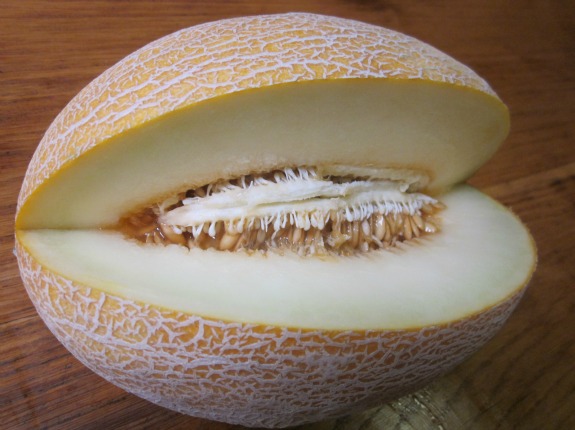
The Sharlyn is a big melon, originally from southern Europe and Algeria, with skin like a cantaloupe and a flavor that’s a whole lot better. Photo by Alastair Bland.
Spicy Arugula-Avocado Salad with Sweet Corn and Canary Melon
Yellow-skinned with snow-white flesh and named for its islands of origin off the western African coast, the Canary is a melon superstar. Though fragrant, the fruit is less musky than others of the family (called, interestingly, “muskmelons”) and instead emits a mellower, honey-like fragrance. The soft, sweet flesh calls for contrast, so we thought of a salad spiced with arugula, avocado, smoked paprika and a biting vinaigrette. We followed a recipe from Fresh and Foodie for a watermelon-avocado-arugula salad and replaced the watermelon with Canary melon. To further the summer feel, we added toasted corn kernels.
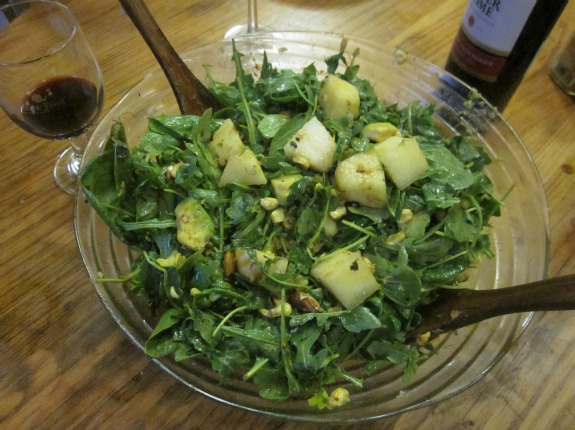
The soft, honey-like sweetness of fresh melons can go nicely in a salad. This one includes spicy arugula, smoked paprika, toasted corn and Canary melon. Photo by Alastair Bland.
Greek Yogurt and Crenshaw Melon Soup with Cilantro
The Crenshaw seduced us with its powerful aroma, bright yellow skin and soft feel—but inside, we found it surprisingly similar to a cantaloupe. For many, this will be a virtue, but we decided to give the Crenshaw a real makeover. So we puréed it in a food processor as the first step in a Greek-themed yogurt-melon soup inspired by a recipe from the Healthy Foodie. We substituted cilantro for the suggested mint, added cumin to the blend and drizzled over the juice of a lime. Be sure to use a tart yogurt with high fat content to balance the sweetness of the melon.
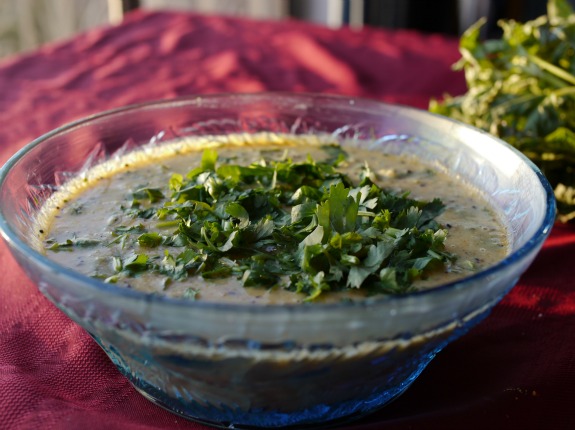
One might not know it at a glance, but this cold soup contains half a Crenshaw melon, its sweetness offset with tart, fatty yogurt, earthy cumin and spicy cilantro. Photo by Andrew Bland.
Honeydew Melon Curry Over Brown Rice
This lime green melon is nothing unusual. But the juicy, fragrant honeydew melon is popular for a reason: it’s one of the best. Good ones smell sweet and flowery, and especially ripe ones may be identified by a rubbery stickiness over the skin. The softer the better, if you like juicy, and as long as the melon bears no bruises or rotten spots, it should be a winner. The food blog A Stack of Dishes provided a recipe for ceviche with honeydew and jicama about a year ago. Inspired, we took a slightly different direction and made a honeydew-jicama coconut curry, served cold over brown rice. We combined in a serving bowl half a large melon with half a medium-sized jicama, skinned and cubed. In went half a can of coconut milk, a tablespoon of curry powder, a half cup of red onion, a cup of diced basil, salt and pepper. Twenty minutes prep time and it’s done—a perfect cooling dinner for a balmy night.
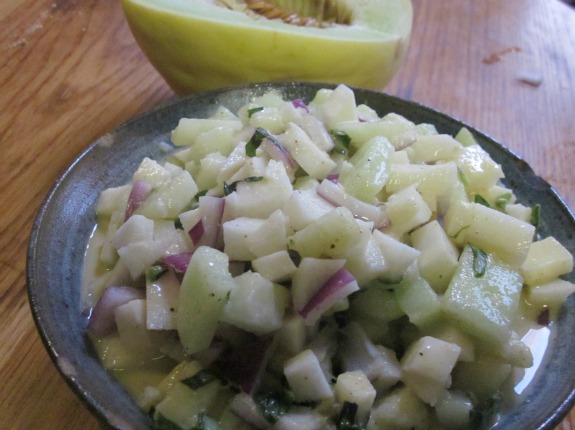
A honeydew melon-jicama curry with coconut milk may be served cold over brown rice or quinoa. Photo by Alastair Bland.
Piel de Sapo: Au Natural
Finally, since melon season is sometimes too hot for cooking, we decided that if there should be one melon to devour whole—and there definitely should be—it must be the best, and that may be the Piel de Sapo, or “Skin of Toad.” Also called the Santa Claus melon, the Piel de Sapo has a mottled skin like a zucchini’s—or a toad’s, if you have a vivid imagination—and this melon, a favorite in Spain, often produces little to no aroma, making it seem like a gamble to buy. However, only occasionally is it a flavorless dud. More often than not, the Piel de Sapo melon is superb—with flesh juicy, white, just crunchy enough and very sweet. Toward the center of the fruit, the flesh is almost velvety and just about melts at the touch of a spoon. Shove aside the recipe book, grab a knife and dive in. You might also want to wear a bib.
/https://tf-cmsv2-smithsonianmag-media.s3.amazonaws.com/accounts/headshot/Off-Road-alastair-bland-240.jpg)
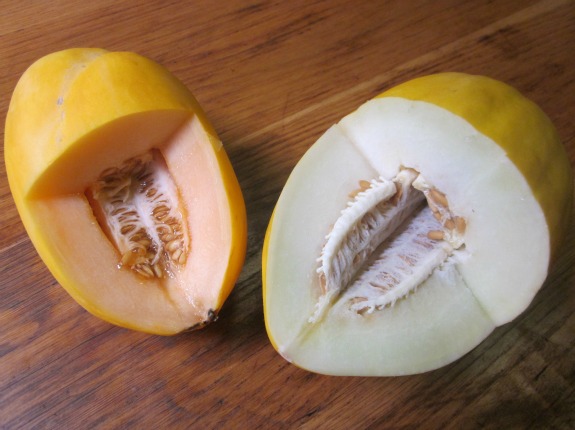
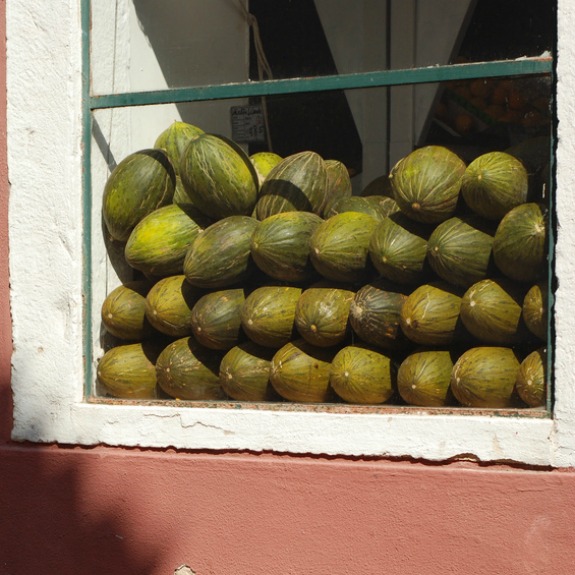
/https://tf-cmsv2-smithsonianmag-media.s3.amazonaws.com/accounts/headshot/Off-Road-alastair-bland-240.jpg)